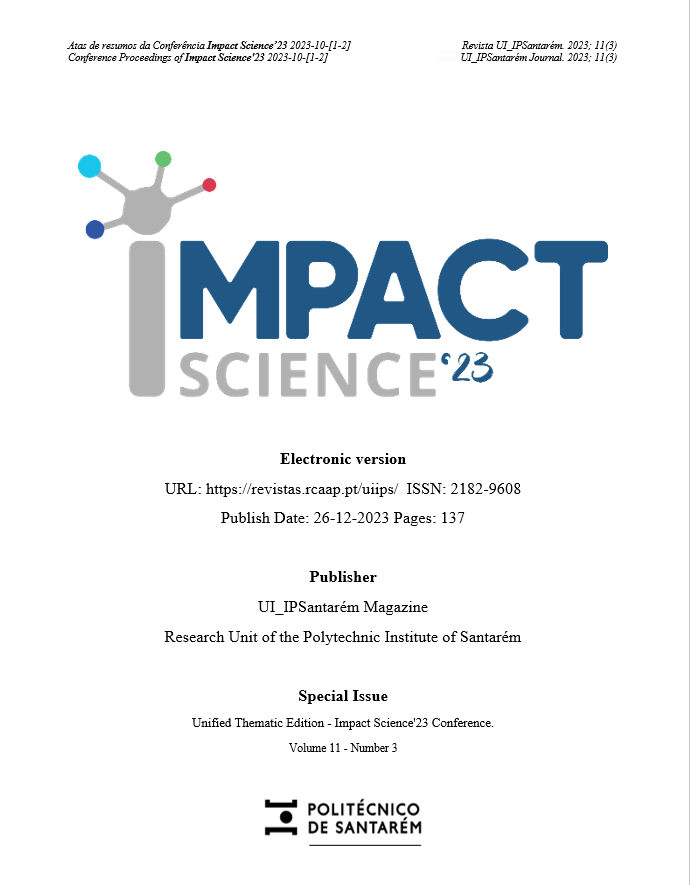Improving statistical literacy of future senior occupational safety technicians
DOI:
https://doi.org/10.25746/ruiips.v11.i3.32337Keywords:
Graficacia, Gráficos estatísticos, Relatórios técnicosAbstract
The 21st century is marked by the relevance of statistical data in decision-making in various areas of society. Technological advances contribute greatly to this, on the one hand, providing the improvement of data analysis tools, revealing new and more advanced statistical methods, on the other, making basic statistical tools more accessible and appealing, such as, for example, graphical representation.
To deal effectively with statistical data, individuals must be statistically literate, which, as established by various definitions of statistical literacy, means to have the hability to understanding and use statistical methods and language, in particular, to understand basic statistical terms, use statistical symbols, and interpret different representations of data.
One of the most visible aspects of Statistics in everyday life is the widespread use of statistical graphs, taking advantage of their essence as a universal language and their potential for organizing, presenting and disseminating the information contained in statistical data. There is, however, evidence that reading, interpreting and constructing graphs is not as simple as it seems. Research on the difficulties and errors that arise when dealing with graphs, have concluded that these adversities are not restricted to individuals with lower level education , having been identified in all strata and sectors of society and areas of knowledge.
The collection, organization, analysis and reporting of statistical elements relating to occupational safety and health (OSH) is one of the legal obligations of organizations' occupational safety and health services, expressed in Portuguese Law No. 102/2009 of September 10 (and amendments). Due to the statistical nature of the data collected and reported by Occupational Safety Technicians (TST), in order to comply with these legal obligations and internal communication in organizations, it is crucial that these professionals have the skills that allow them to analyze the data and transmit the information resulting from this analysis in a rigorous and clear way. In particular, they should be aware of the potential and limitations of statistical graphs, so that the inclusion of these representations in reports fulfills its purpose of summarizing and communicating information from statistical data, enabling a faithful portrait of phenomena and, ultimately, supporting decision-making.
Considering the difficulties that students, future TST, reveal in the activities of reading, interpreting and constructing statistical graphs that we propose, taking into account the recommendations of studies that address these difficulties, and committed to promoting statistical literacy, we have planned a seminar/workshop within the scope of the study of statistical graphs. In this seminar/workshop, where the approach to Statistics goes beyond the purely mathematical component of the procedures, integrating the context in the real world, we address, among others, the usefulness and suitability of graphs and the recommendations to ensure the construction of quality graphs.
In this work, we reflect on the relevance of the contents and objectives of this seminar/workshop, and its contribution to the promotion of statistical literacy in future TST.
Downloads
Published
How to Cite
Issue
Section
License
Copyright (c) 2023 Carla Santos, Ana Dias, Cristina Dias, Claudia Santos

This work is licensed under a Creative Commons Attribution-NonCommercial-NoDerivatives 4.0 International License.
Authors publishing in this journal agree to the following terms:
Authors retain copyright and grant the journal the right of first publication, with the article simultaneously licensed under the Creative Commons Attribution License that allows sharing of the work with acknowledgement of authorship and initial publication in this journal.
Authors are permitted to enter into additional contracts separately for non-exclusive distribution of the version of the article published in this journal (e.g., publish in an institutional repository or as a book chapter), with acknowledgment of authorship and initial publication in this journal.
Authors have permission and are encouraged to publish and distribute their work online (e.g., in institutional repositories or on their personal webpage) at any point before or during the editorial process, as this may generate productive changes, as well as increase the impact and citation of the published work.



